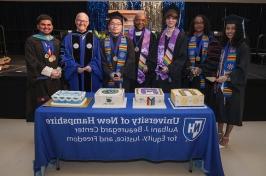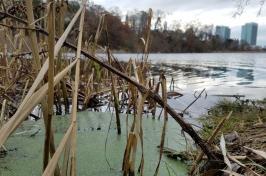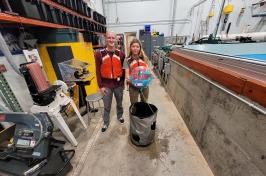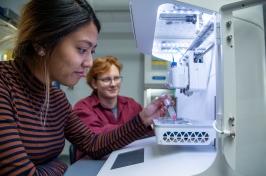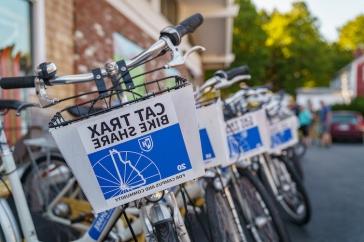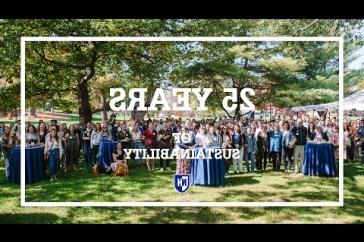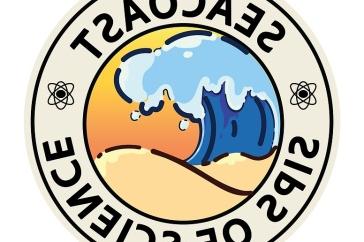它不再只是为农贸市场准备的:“新鲜, 当地的, “可持续发展”描述了联合国大学如何为其500万平方英尺的校园供电. 现在, the university’s newest source of electricity — hydropower from three small 新汉普郡 dams — could even be described as “artisanal.” 主要研究 is among just a few universities in the nation using so-called micro hydropower.
“主要研究 has definitely been one of the leaders in higher education for seeking out unique ways to use renewable energy, 特别是本地可再生能源, 以满足我们的气候行动需求,97年的马特·奥基夫说, 主要研究的能源和公用事业主管.
自2009年以来, the university’s ultra-efficient cogeneration power plant has been fueled primarily by the innovative EcoLineTM landfill gas-to-energy project that pipes purified methane gas from a nearby landfill to “cogen” — the combined heat and power plant. That plant generates electricity then captures the waste heat normally lost during that process to heat and cool campus buildings.

钢池水电在安特里姆, 新汉普郡, is one of three small hydropower facilities 主要研究 has partnered with to fulfill electricity needs on the Durham campus.
Video
而cogen提供了几乎所有校园能源需求, 主要研究 has always purchased about 10 percent of its power from the electric grid. 在过去一年内, 受到一项能源会计政策的推动,该政策被称为集团净计量, 主要研究 has partnered with three small hydropower facilities — 钢池水电在安特里姆, Ampersand Energy Partners in Groveton and Fiske Hydro in Hinsdale — to provide that last 10 percent, 约八百万千瓦时(kWh), 购买的权力.
从这些小型公用事业购买电力将节省约200美元,从大学每年100万美元的进口电费中扣除. 和, 正如steelpond的创始合伙人Lori Barg所指出的那样, hydropower from existing dams is as clean as the bucolic streams and ponds that provide it.
“水的美妙之处在于你可以反复使用它,”她说. 事实上, 她的工厂, w在这里 a concrete dam has created Steels Pond from the north branch of the Contoocook River, began fueling production of the Goodell Company’s knives and once-famous apple parers in 1909.
According to Barg, just 80 of 新汉普郡’s estimated 6,000 dams are producing power. 与当地的食物运动进一步平行, 当地的 hydropower keeps additional economic benefits — from power plant salaries to the 当地的 taxes the hydropower plants pay — close to home.
Back on campus, O’Keefe notes that 主要研究 has another important arrow in its energy quiver: efficiency. With seed money from the American Recovery and Reinvestment Act (ARRA) in 2009, 主要研究 launched a revolving fund that supports new energy efficiency projects on campus then plows the savings from those projects back into the fund. O’Keefe estimates the campus has seen more than $2 million in savings from projects like efficient lighting retrofits across campus and a passive solar heating system in Kingsbury Hall.
While Yankee thrift is a driver of 主要研究’s energy efficiency and power choices, 它们不仅仅是感觉良好的决定. In 2007, 主要研究 was among the first universities nationwide to sign the American College & University President’s Climate Commitment, a binding agreement to achieve carbon neutrality.
“主要研究 has a climate action plan that sets goals for us to try to achieve carbon neutrality by 2100,奥基夫说, noting that one of the first milestones commits 主要研究 to reducing its greenhouse gas emissions by 50 percent by 2020 (2001 is the baseline). “To do that, we need to drastically change how we use energy sources 在这里 on campus.”
了解联合国大学的可持续发展双专业 在这里.
-
写的:
贝斯保梯 | 主要研究营销 | 贝丝.potier@365meishiba.com | 2-1566














